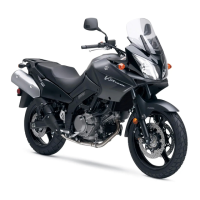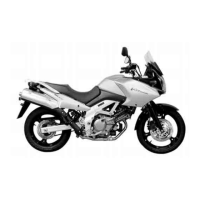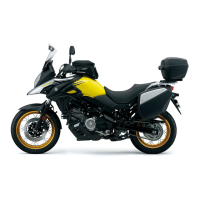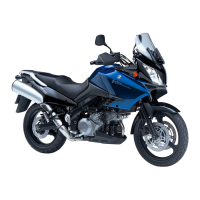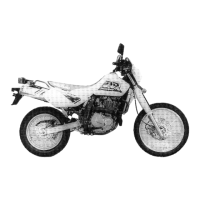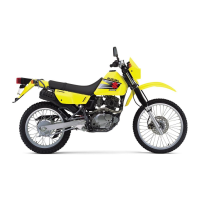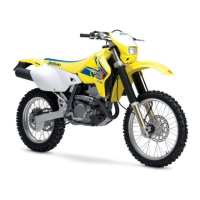TIRES
Failure to follow these warnings
may result in an accident due to
tire failure. The tires on your
motorcycle form the crucial link
between your motorcycle and the
road.
Follow these instructions:
Check tire condition and pres-
sure, and adjust pressure
before each ride.
Avoid overloading your motor-
cycle.
Replace a tire when worn to the
specified limit, or if you find
damage such as cuts or cracks.
Always use the size and type of
tires specified in this owner's
manual.
Balance the wheel after tire
installation.
Read this section of owner's
manual carefully.
Failure to perform break-in of the
tires could cause tire slip and loss
of control.
Use extra care when riding on new
tires. Perform proper break-in of
the tires referring to the BREAK-IN
section and avoid hard accelera-
tion, hard cornering, and hard
braking for the first
160
km
(100
miles).
TIRE PRESSURE
AND LOADING
Proper tire pressure and proper tire
loading are important factors. Over-
loading your tires can lead to tire fail-
ure and loss of vehicle control.
Check tire pressure each day before
you ride, and be sure the pressure is
correct for the vehicle load according
to the table below. Tire pressure
should only be checked and adjusted
before riding, since riding will heat up
the tires and lead to higher inflation
pressure readings.
Under-inflated tires make smooth cor-
nering difficult, and can result in rapid
tire wear. Over-inflated tires have a
smaller amount of tire in contact with
the road, which can contribute to skid-
ding and loss of control.
Cold Tire
Inflation
Pressure
TWO-UP
RIDING
250 kPa 280 kPa
I
REAR
I
2.5~~~
I
2.8l3:fy
(
NOTE: When you detect drops in tire
pressure, check the tire for nails or
other punctures, or
a
damaged wheel
rim. Tubeless tires sometimes lose
pressure gradually when punctured.
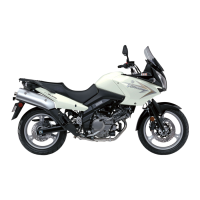
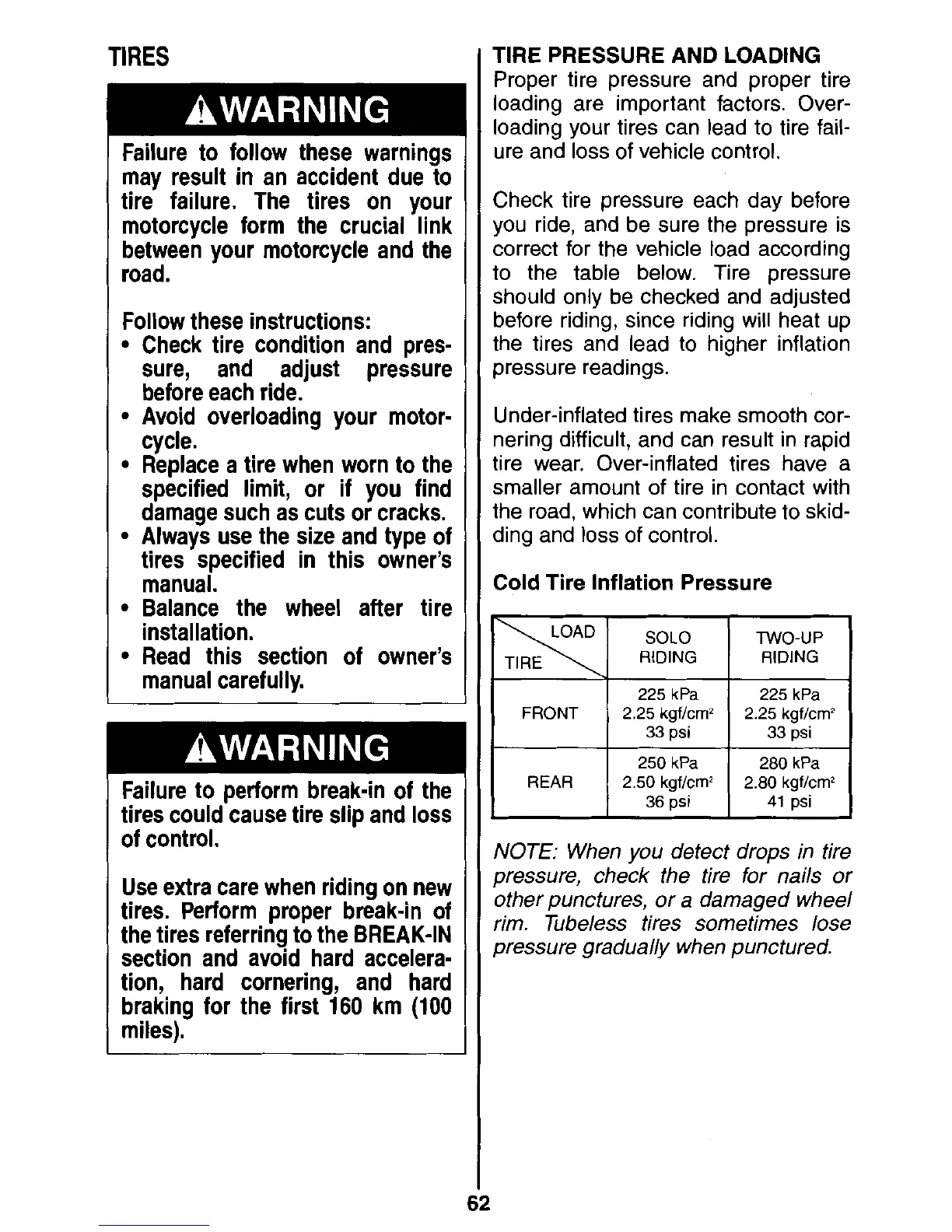